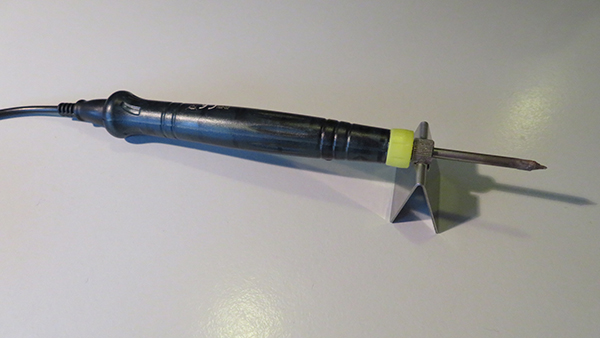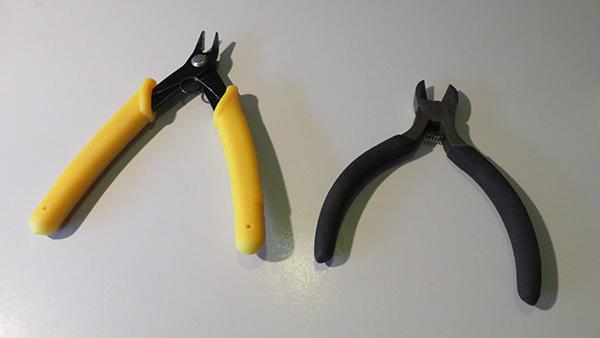-
Notifications
You must be signed in to change notification settings - Fork 0
Tools

| Previous page | Next page |
|---|---|
| Components | Preparation |
To be able to solder in a comfortable way it is best to use several tools. This page describes which tools could be very helpfull to use while soldering.
To strip the end of the wires it's best to use a stripping plier. As an alternative you can use a lighter and remove the molten part with you index finger and thumb.
To solder all components onto the PCB you'll need ofcourse a soldering iron! I personally use an USB soldering iron. The wire is not too stiff and you can easily plug it in any USB charger which at least delivers 1,5A. But generally a normal soldering iron with a bit more heat or even heat control would be better to melt the solder a bit more easily.
To cut all overflow legs you'll need a side cutter. I prefer the yellow one on the left on the image above. That one is more flat and stronger to cut through the legs easily and as flat as you almost can't see a leg anymore at the other side of the PCB than you soldered the component on. I don't know whether that side cutter has any special name because I couldn't find it anymore in my order history.
Sometimes you need to solder things with one hand, hold the PCB with the other hand and you actually need another hand to hold a component in place. An helping / third hand can be the solution for this issue. It is very advisable to have one.
This Wiki is licensed under a Creative Commons Attribution-ShareAlike 4.0 International License.




